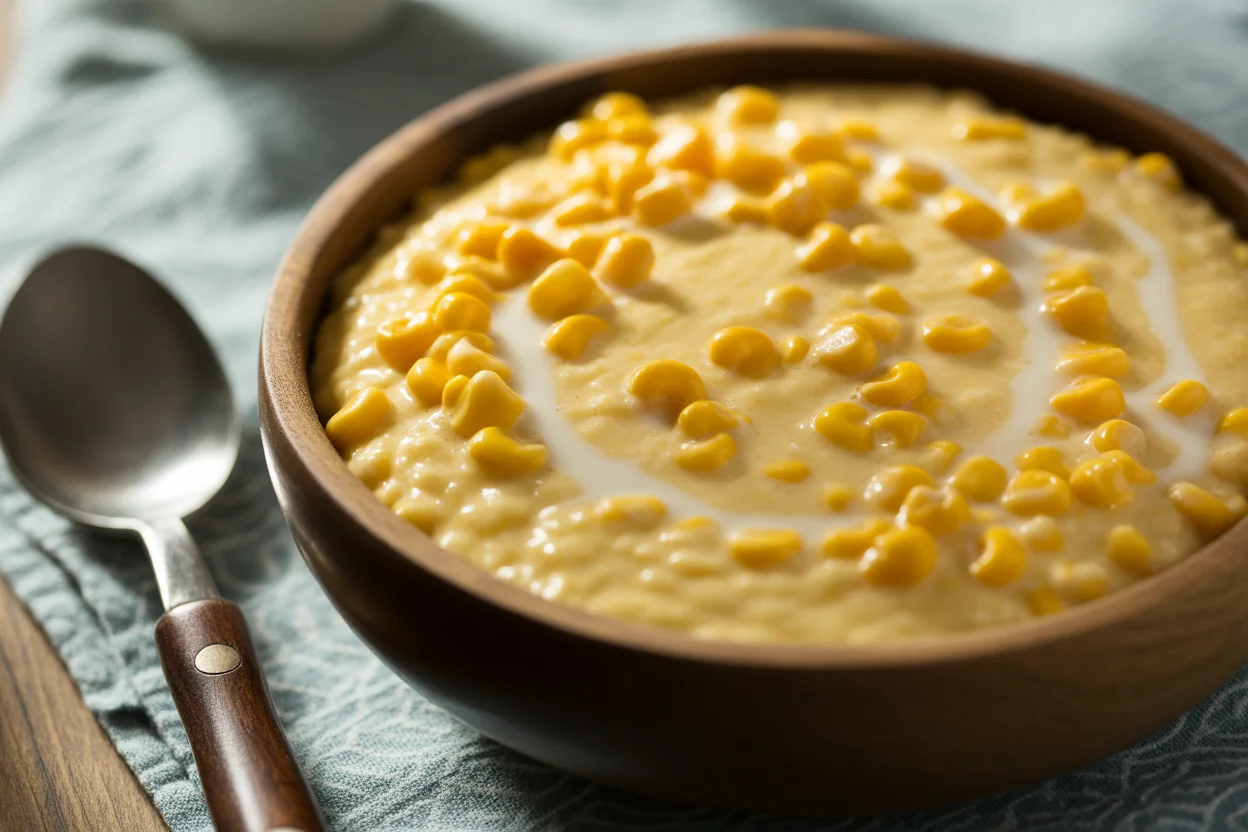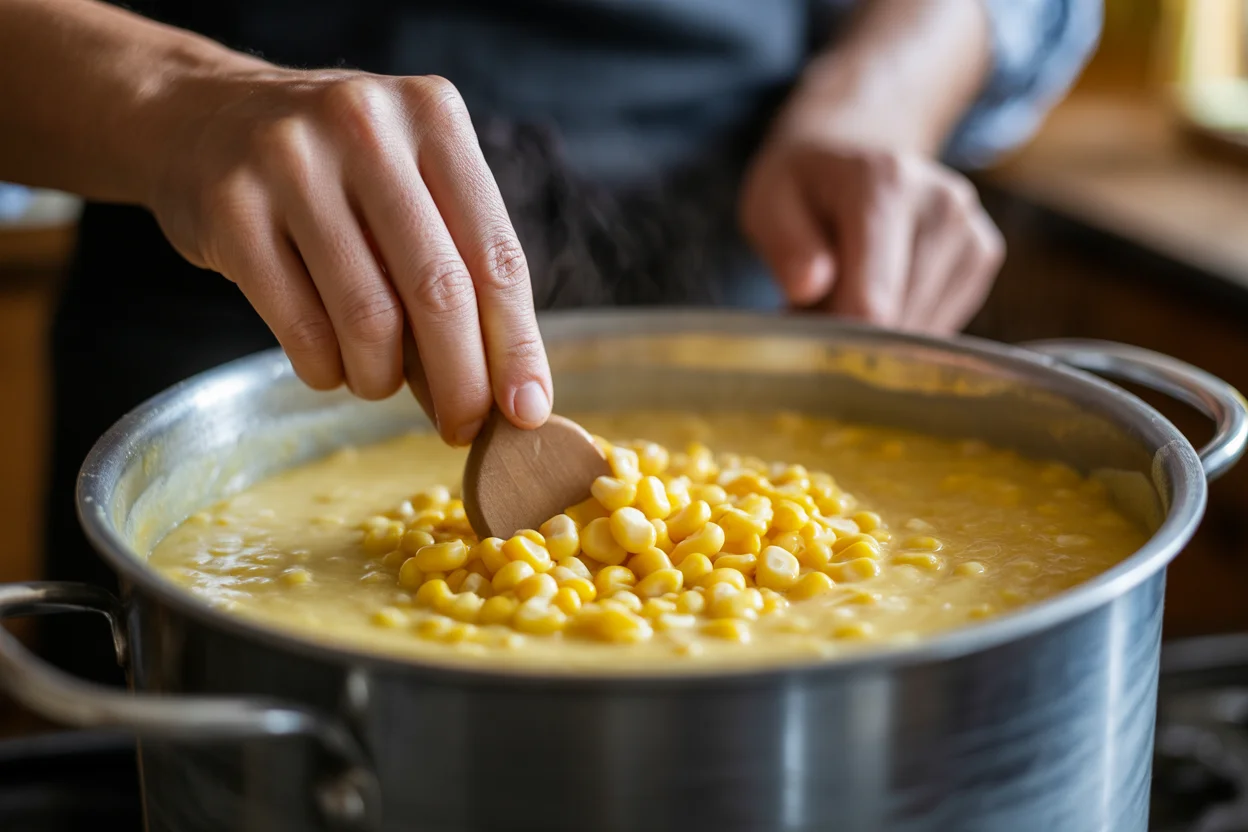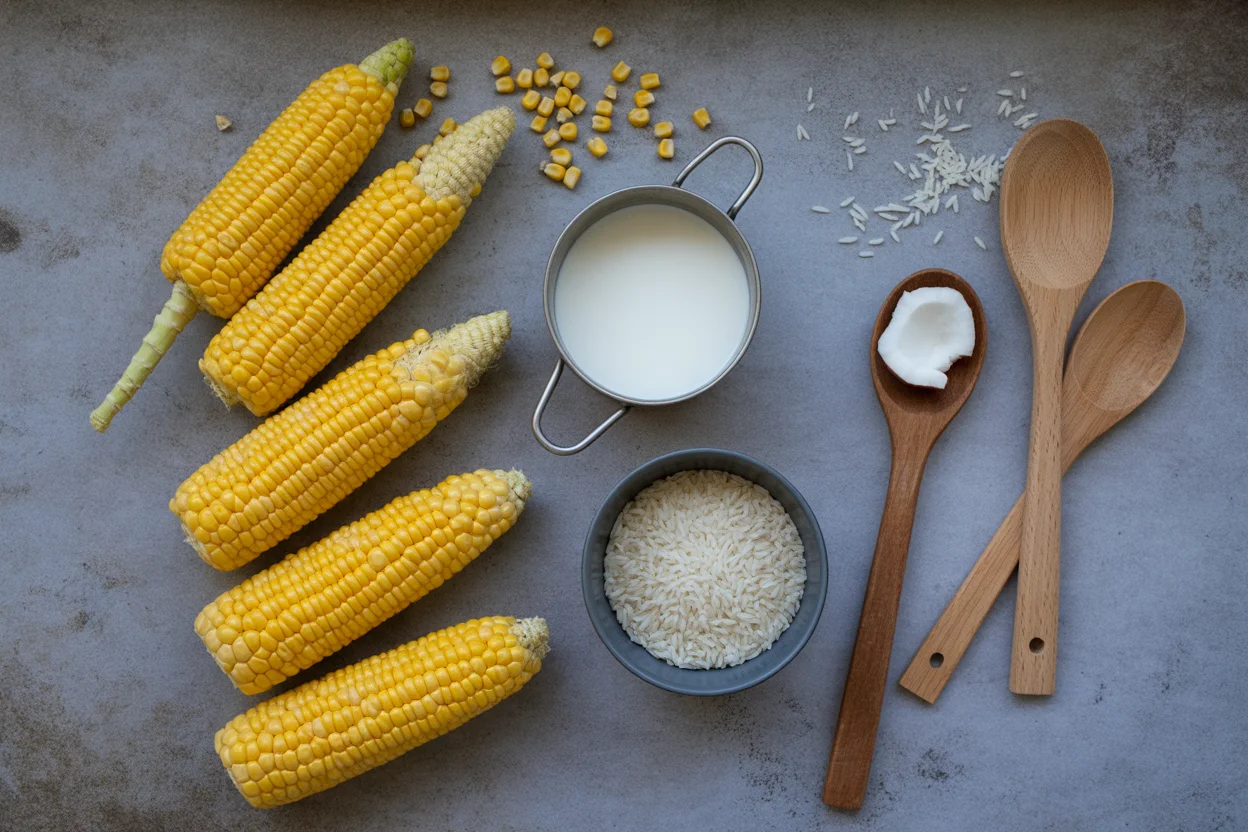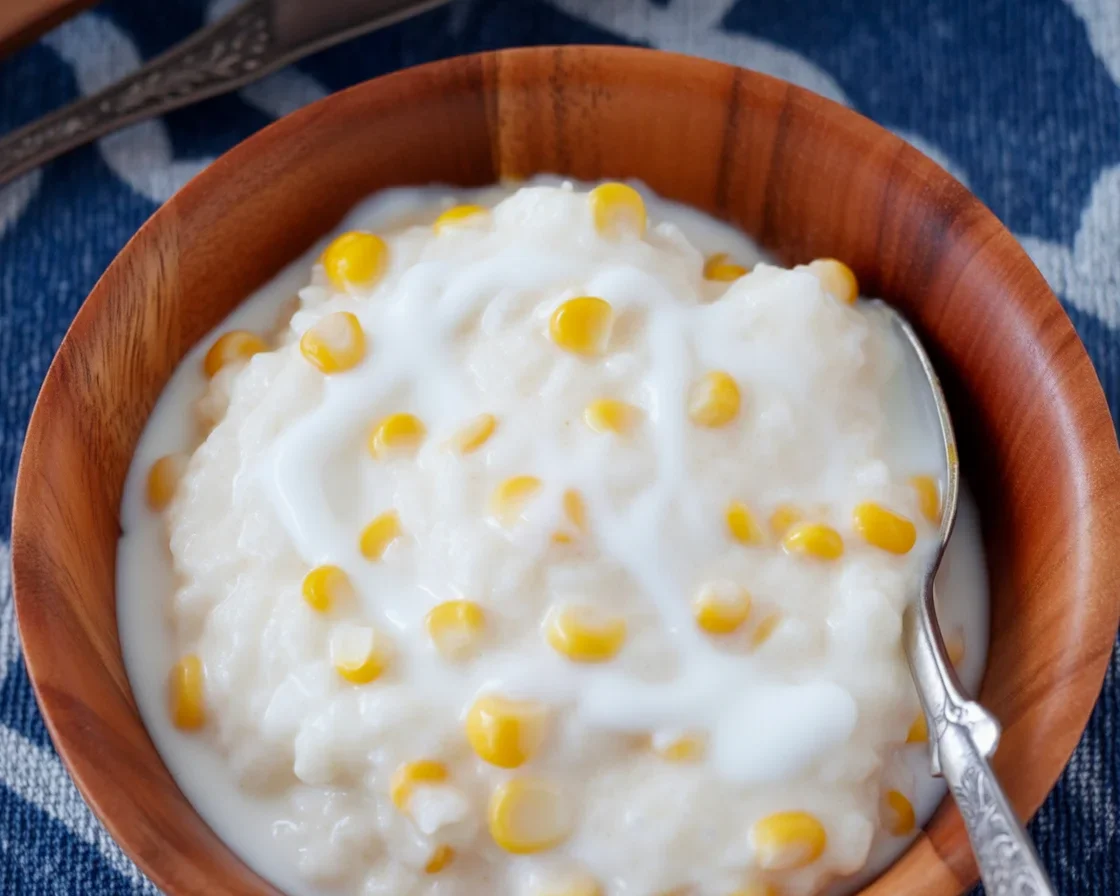Filipino ginataang mais has this magical way of turning boring afternoons into something to look forward to, especially when you need a pick-me-up that feels like a warm hug from your Lola. Tell me, have you ever gotten a craving for something creamy, sweet, but not cloying, and just a little extra for dessert or merienda? It happens to me every time it rains. Before I found my groove with Filipino kitchen classics, I was the person impatiently checking the pot every five minutes (not gonna lie—still do). Luckily, recipes like ginataang mais and even a comforting classic Filipino goto can save your day. If you’ve got a thing for simple, hearty sweets (my hands are up), you’ll definitely want to add this one to your “must-cook” list—trust me. Not convinced? Sometimes it’s what you whip up for the kids that ends up being everyone’s favorite, kind of like half the dishes in this kid-friendly Filipino recipe collection. 
Introduction to ginataang mais
Let’s get this out of the way: ginataang mais is pure comfort, right there with the best Filipino soul food. This dish, which means sweet corn and sticky rice porridge with coconut milk, is—dare I say—one of the easiest desserts you’ll ever learn. You don’t need to hunt down fancy ingredients, unless your market’s out of glutinous rice (which…has totally happened, so buy extra).
The best thing? Almost every Filipino family seems to have their little secret take—some add more coconut milk, others sneak in a bit of latik. In our noisy family kitchen, we keep it humble: just sticky rice, corn, coconut milk, sugar. The smell takes me straight back to childhood afternoons, gossip flying, kids chasing each other between the kitchen and the rain outside. This isn’t a five-star-restaurant dessert and it shouldn’t be. That’s really the beauty of Filipino ginataang mais. 
Preparing sticky rice
Here’s the thing with sticky rice—you can’t rush it. I tried once. Disaster. Basically, to make the best Filipino ginataang mais you need to give the rice some love. I always rinse glutinous rice a couple of times (cloudy water, let’s get rid of that), then soak it for about 10 minutes. It cooks better and comes out softer this way.
On the stove, combine the rice with water, bring it to a boil, then drop it to a gentle simmer. Stir, stare, sniff. When the grains start looking plump and the mix thickens, you’re on the right path. Don’t walk off—sticky rice likes to stick (the hint is in the name, I guess).
If you’re like me and never measure properly, use about half a cup more water than you think you’ll need. Better soft than burnt, right? I’ve even tossed in an extra splash after forgetting the pot simmering while I scroll memes. So forgiving. Now you’re about halfway to real Filipino ginataang mais comfort. 
Cooking with coconut milk
If there’s one thing that really makes Filipino ginataang mais pop, it’s definitely coconut milk. You cannot skip this! Once your rice is all soft, pour in the coconut milk. The room will instantly smell indescribable—sweet, decadent, amazing.
Keep the heat low, gently stirring. The coconut milk thickens, almost embracing the rice. It’s tempting to crank the heat, but take it slow. You want that sticky, creamy consistency that sits heavy on the spoon but not so thick you could patch holes in the wall with it (true story, mine was like cement once and I still ate it). If you prefer lighter porridge, add extra coconut or even a splash of water. This recipe forgives—including the impatient cooks among us.
If you want a slightly richer flavor, toss in a Pandan leaf while simmering. Or don’t. I skip it half the time. Perfection is overrated, but coconut is not.
Adding corn and sugar
Oh, this is the easy part—no overthinking needed. For Filipino ginataang mais, I grab a can of sweet corn if fresh isn’t handy. Some folks only swear by fresh, but honestly, canned or frozen works fine. It’s about convenience with just enough nostalgia.
Once the sticky rice and coconut milk have had their moment, in go the sweet corn kernels. Give it a good stir. The point is to scatter that sunshine-yellow color everywhere. Right after, sprinkle in sugar—white, brown, or muscovado if you’re fancy. Taste as you go. Seriously, don’t dump it all at once or you’ll be left with a cloying mess that even the ants will run from.
Watch the mix bubble. If you see too many lumps or spots of unblended sugar, just keep stirring. It needs about 5-10 more minutes to really bring it all together. This step smells so good it’ll bring the kids running (or your nosy neighbor).
“My kids used to beg for chocolate bars but ever since I let them help make Filipino ginataang mais, it’s all they want for merienda. Even my husband sneaks second helpings.” — Mae, family cook, proud tita
Serving warm
Alright—don’t skip this. Filipino ginataang mais tastes best fresh and warm. But here’s how I like to serve it (because honestly, details make the moment):
- Spoon it into small bowls. Tiny bowls = less guilt if you go back for seconds.
- Sprinkle extra corn on top for some crunch and color.
- For the wild ones, a splash of evaporated milk is chef’s kiss.
- Store leftovers in the fridge, but reheat gently—microwave explosions are not as fun as you’d think.
There’s nothing more satisfying than eating this while the rain patters outside. Or under glaring summer sun. It works both ways, strangely. Filipino ginataang mais is always just right with a cup of barako coffee or even solo for a midnight fridge raid.
Dessert occasions
So, when’s the best time for Filipino ginataang mais? I’ll say: any time your spirit craves comfort. It appears at rainy merienda times, but it’s also a shining star at school events, potluck parties, or heck—random afternoons when someone announces “I’m hungry!” and the fridge is uninspiring.
I’ve seen bowls disappear faster than lumpia at birthdays. Sometimes, it’s on the table with the savory stuff, like beside fried fish or beef steak—weird? Maybe. Delicious? Every single time. This dish is not picky about company.
If you’re ever not sure what to bring to a Filipino gathering, cook up a pot. You might return with an empty pan and three new friends (sometimes it happens). Once, it was even my backup when I didn’t have time to make healthy Filipino recipes. Fast, satisfying, and pretty too.
Flavor notes
Let’s talk taste—because Filipino ginataang mais isn’t just “sweet.” It’s got layers, like my favorite telenovela. The coconut milk is rich, soft, and wraps everything up. The sticky rice brings that chew, while the corn pops with sweetness (never boring, promise).
People say it’s “hearty” and “comforting” but really it’s sunshine served warm. The blend of toasty sticky rice and mellow coconut gets a gentle lift from the sugar, and then corn’s burst makes every spoonful lively. I get why other people add vanilla, pinipig, or even a little butter (haven’t tried, but maybe someday). Filipino ginataang mais is the flavor of togetherness.
That’s really why it’s tops in my book—nothing complicated, just happiness you can scoop with a spoon.

Now, if you want to geek out or try expert takes, I’ve browsed recipes like this classic Ginataang Mais Recipe or the fun spin at Ginataang Mais (Coconut Milk Rice Pudding with Corn) – Foxy Folksy. Or if you’re detail-driven, Ginataang Mais Recipe lays it out super clear, step-by-step. But honestly, I say just jump in, taste and tweak until it’s your perfect bowl. Let me know how yours turns out—I’ll bet second helpings you love it!
Ginataang Mais
Ingredients
Main Ingredients
- 1 cup glutinous rice Rinsed and soaked for about 10 minutes
- 2 cups water For cooking rice, adjust as needed
- 1 can sweet corn Canned, frozen, or fresh corn can be used
- 1 can coconut milk Essential for the creamy texture
- 1/2 cup sugar Adjust to taste; can use white, brown, or muscovado
Instructions
Preparation
- Rinse the glutinous rice a couple of times until the water runs clear.
- Soak the rice in water for about 10 minutes.
Cooking the Rice
- Combine the soaked rice with 2 cups of water in a pot and bring to a boil.
- Once boiling, reduce heat to a gentle simmer and stir occasionally.
- Cook until the rice is plump and the mixture thickens, about 15-20 minutes.
Adding Coconut Milk and Corn
- Pour in the coconut milk and stir gently, keeping the heat low.
- Add the sweet corn kernels and mix well.
- Sprinkle the sugar into the mixture, tasting as you add to avoid over-sweetening.
- Cook for an additional 5-10 minutes until well combined and bubbly.
Serving
- Spoon the ginataang mais into small bowls for serving.
- Top with extra corn for crunch and a splash of evaporated milk if desired.
- Serve warm for the best experience.

